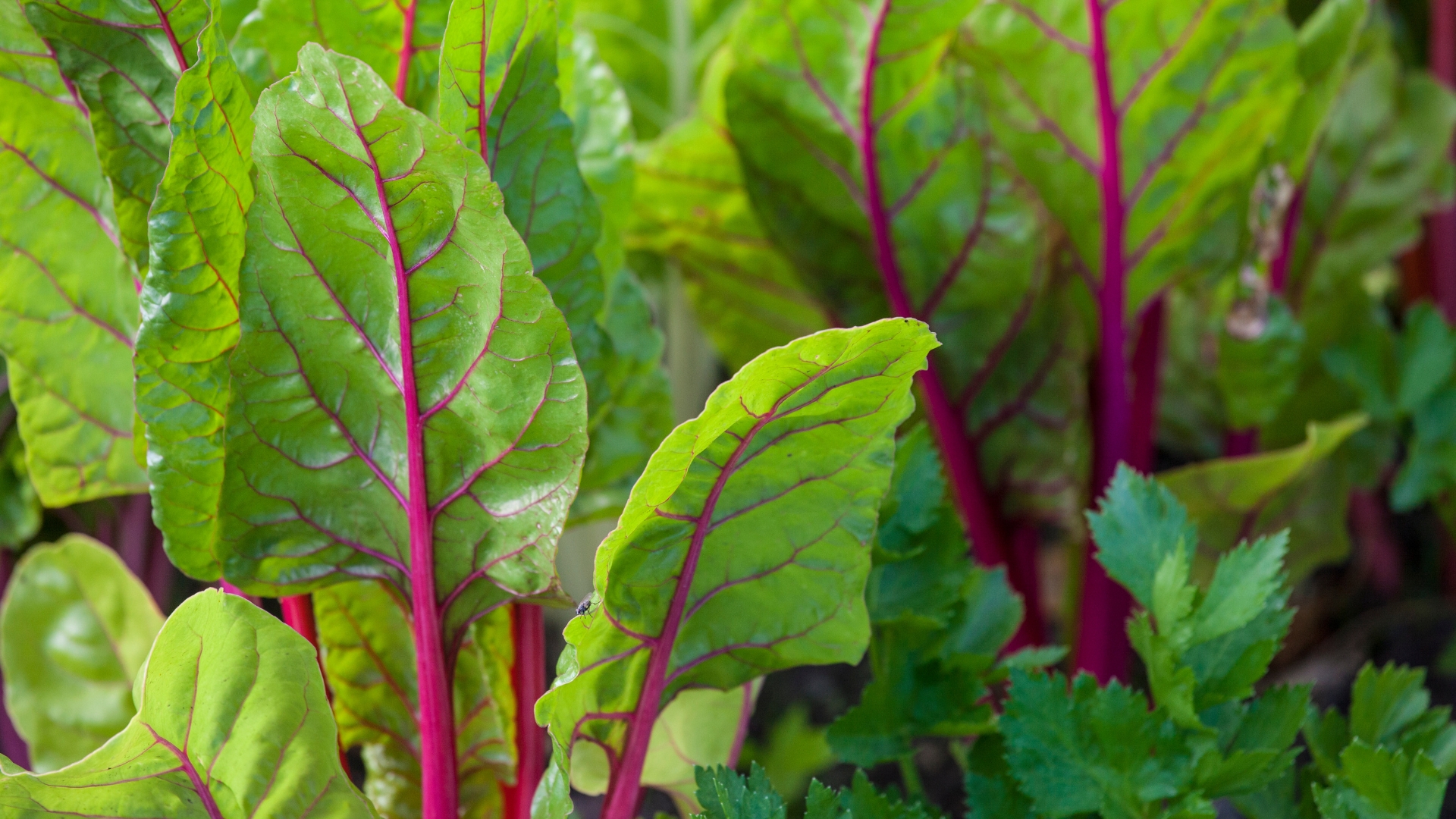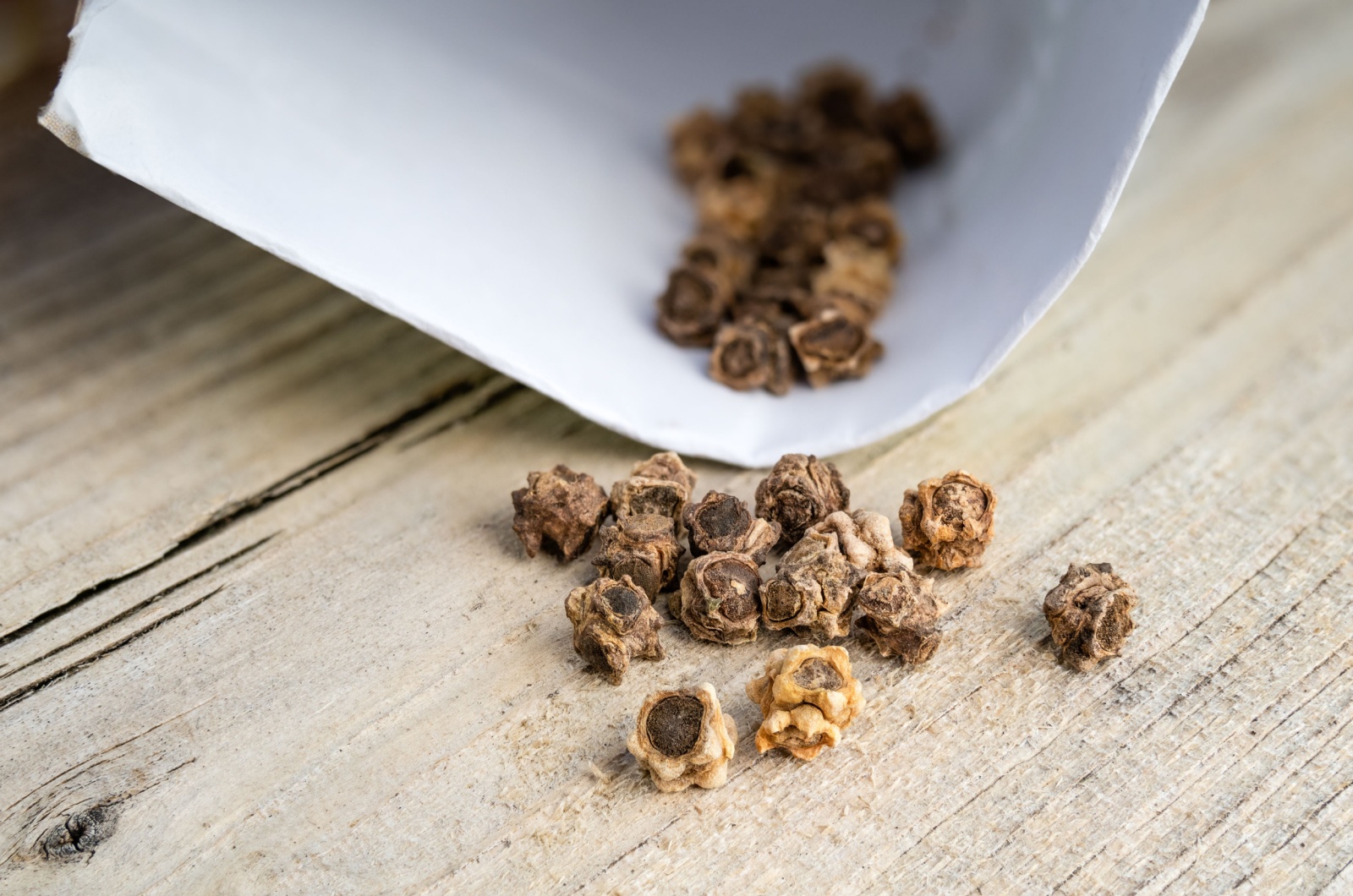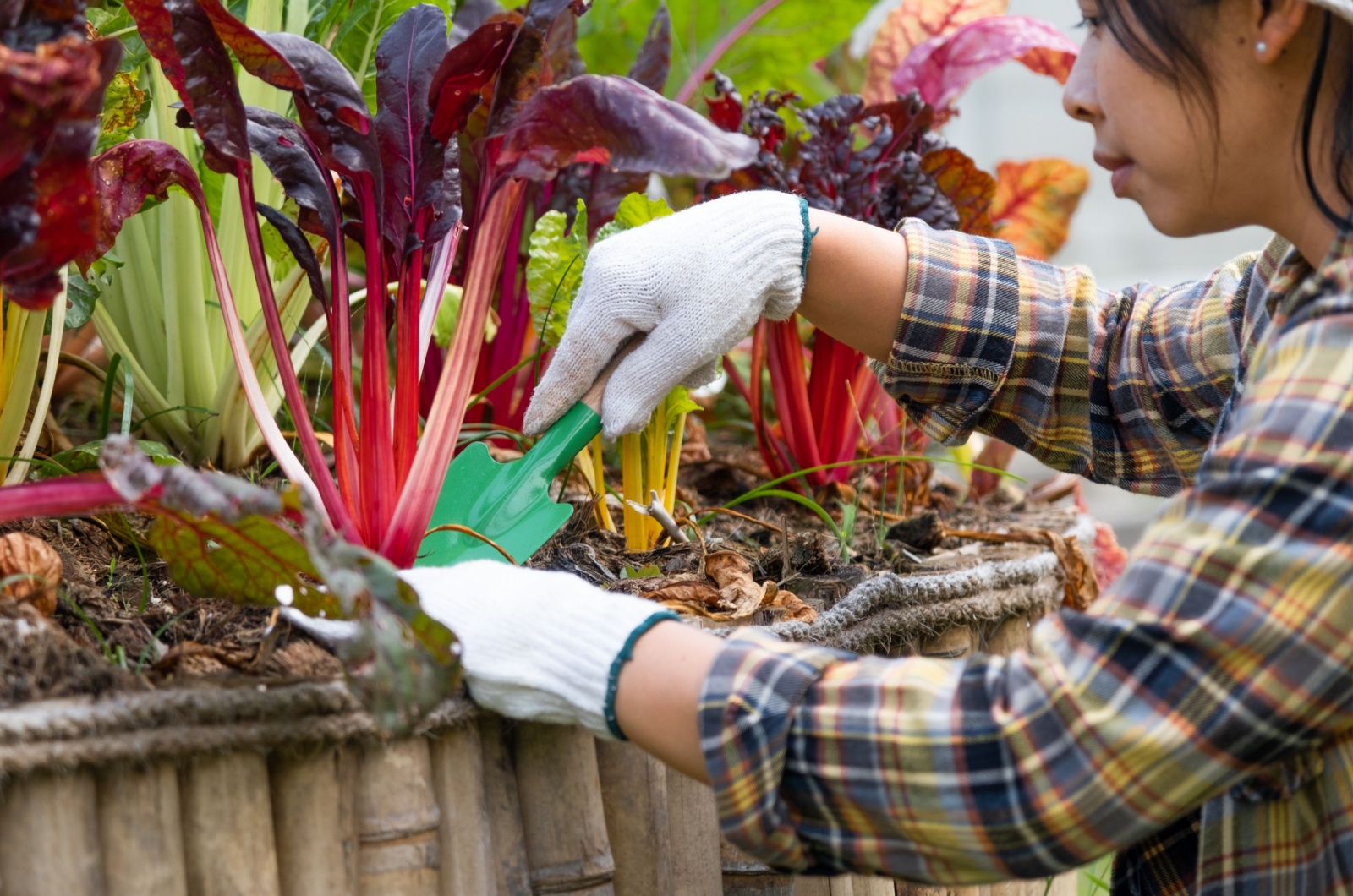Ready to grow your own Swiss chard? If so, then you’ve come to the right place!
This leafy green veggie is super easy to grow in the garden; even if you don’t have enough space, you can always try and grow swiss chard in containers.
Swiss chard is beginner friendly and will continue to grow every year, as long as you take good care of it.
Luckily, we are here to help you. Join us as we go through the basics of growing and planting Swiss chard. Let’s get those vibrant leaves and a bountiful harvest!
Tips For Growing Swiss Chard From Seeds
You can plant Swiss chard seeds directly into the soil or start the seeds indoors in pots. If you want to sow them into the ground, wait until mid-to-late spring when the soil temperatures are about 50 degrees Fahrenheit.
Plant each seed in rows 12 inches apart, spacing them around 2-4 inches apart (plants will eventually be trimmed to 6 inches apart).
You can also plant seeds in mid-summer so you can keep harvesting the plant throughout the winter and the following spring – do this ten weeks before the first expected frost.
Or you can start the Swiss chard seeds indoors to extend the growing season (this is super beneficial for those who live in colder climates). Transplant the little seedlings once the risk of frost has passed.
Keep your indoor Swiss chard seedlings in a greenhouse or on a warm windowsill. Handle the seedlings with care, ensuring that you are using the good soil designed to start the seeds in.
If you spot slugs or snails nibbling on your young Swiss chard, starting the seeds indoors is the way to go!
When planting or transplanting, make sure to find a location in your garden where Swiss chard can receive full sun (if you have some shade, this veggie won’t mind!). Add some organic matter into the soil and watch your veggie grow and thrive!
Related: 10 Easy Plants Greenhouse Beginners Can Grow
How To Care For Swiss Chard
We’ve already mentioned that the soil should be fertile, but you can also aim for soil with proper drainage.
As Swiss chard grows, you’ll notice a lot of weeds around it – pluck those out!
What you can also do to smother weeds is add a layer of mulch that will also help with moisture retention. Avoid spraying weed killer as it could potentially harm your veggies.
Regularly water Swiss chard veggies throughout the season, especially in their seedling stage. Once established, this leafy vegetable is drought tolerant, but will grow better when watered frequently.
Keep the soil moist to prevent the plant from bolting, especially during hot summer days. Cut off the blossoms that develop if your plant starts to bolt, and it will continue to produce leaves.
If you added some compost or other form of organic matter when planting Swiss chard, you won’t have to worry about additional fertilizer. But if you want to add some more, I would recommend using a balanced multi-purpose fertilizer.
You’ll notice either baby leaves or fully-grown mature Swiss chard leaves – you can harvest baby leaves that appear about 35 days after sowing the seeds, or wait 50-60 days for mature ones!
Simply pick the oldest outer leaves and your plant will still keep producing younger leaves. However, you can also cut the entire plant but just leave the crown behind, which will sprout a new crop of leaves.
Protect your Swiss chard from winter to extend the harvesting season: you can use row covers. Don’t forget that Swiss chard plants can still be harmed by colder weather.
Also read: 22 Best Cold Weather Greens For Winter Gardens
How To Grow Swiss Chard In Containers
The best thing about this leafy veggie is that you can also grow it in a container!
You can put it on a deck, patio, balcony, or in your yard if the garden soil is undesirable. Opt for wide containers – 12-inch-wide and deep containers can be used to grow one plant, or go for a 10-gallon container if you want to grow two plants.
No matter which container you choose, it’s crucial that it has drainage holes in the bottom. Use high-quality potting soil at all times (don’t reusing old garden or potting soil).
You can directly sow tiny layers of seeds into the soil, followed by another thin coating of compost.
After giving them a little watering, thin out the seedlings as soon as they emerge, spacing them about six inches apart.
Throughout the growing season, keep the soil damp in the container and place it in a sunny backyard position.
Remember that container grown Swiss chard plants will need to be watered more frequently than those planted in the ground. During the growing season, fertilize crops in pots with a liquid fertilizer every few weeks.
Related: 18 Best Veggies To Grow In The Heat Of A Summer Garden




